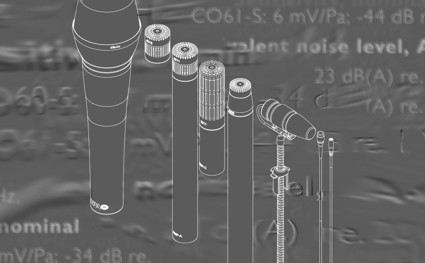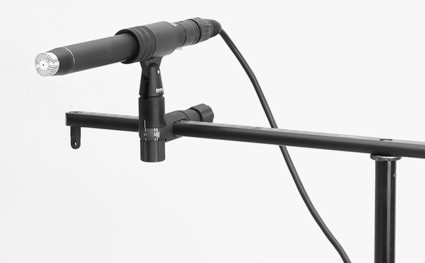Microphone technology FAQ – your questions answered

You ask, we answer
Q: What should I do when my miniature microphone gets soaked in water or sweat?
A: Water is not good for a microphone, sweat is even worse, but sometimes it is unavoidable in a professional environment. Shake the water from the microphone and let it dry out, possibly close to a heating source like a radiator (never use a hairdryer). Omni microphones that have been filled with sweat should be cleaned in demineralized water before drying them out.
Q: Why is my cardioid lavalier (4080) so much bigger than my omni (4060)?
Error loading Partial View script (file: ~/Views/MacroPartials/TaggedProducts.cshtml)A: The DPA 4080 benefits from the use of a directional interference tube, making the directionality more sharp than usual for such a small diaphragm. Like any other pressure gradient microphone, the 4080 suffers from handling-, pop- and breath-noise, but the 4080 is efficiently protected against these unwanted sounds with the rubber shock mount and foam pop-filter.
Q: I read on the Microphone University that DPA uses pre-polarized backplates in the condenser capsules. Why, then, is phantom power needed?
A: Phantom power supply is needed to power the output buffer stage of a condenser microphone – the built-in preamplifier and impedance converter.
Q: Why do you recommend buying your adapter range? I can solder the connector on myself.
A: There is no standard in pro audio for connectors and power supply for wireless microphones. The DPA adapter range is both physical adaptation to a certain plug but also in most cases an electrical modification of the sensitivities of the microphone and transmitter and a DC level offset. Furthermore, cable relief is very important and it can only be done perfectly with a certain cable diameter to the plug in question. The DPA miniature cable has a perfect secure fit into the MicroDot connector, and every DPA adapter is fitted to that connector. Please note that the warranty is void if the product has been modified or altered.
Q. I use the 4066 headband in a musical show. How do I clean my miniature microphone cable from tape remains?
Error loading Partial View script (file: ~/Views/MacroPartials/TaggedProducts.cshtml)A: Residue from tape, glue or make-up may over time etch into the cable and make it more susceptible to brake. The cable can easily be cleaned using organic oil (e.g. olive oil) and lukewarm water. Some users have used a product called Ecotech2 Multi Degreaser from Finish Line with reportedly good results.
Q: What is the minimum supply voltage for a phantom power microphone, and how will the performance of the microphone change with e.g. a 12V power supply?
A: The phantom power standard requires 48 volt ± 4 volt. Lower voltages will result in reduced maximum sound pressure level handling ability. Consequently, the dynamic range will also be reduced. In some instances, depending on the electrical circuits, an increased noise floor can also occur.
Q: I have no output on the LFE channel on the 5100 Mobile Surround Microphone. What could be wrong?
Error loading Partial View script (file: ~/Views/MacroPartials/TaggedProducts.cshtml)A: Below are some troubleshooting pointers:
You need to supply phantom power to both the LFE output and Left and Right channel before there is output on the LFE channel.
The LFE channel should be played back at + 10dB according to the ITU 5.1 standard (which will make it almost unaudible if not).
The LFE channel is low pass filtered below 120Hz and is only active under this frequency as a supplement for the five main channels. Depending on what the 5100 has been tested with, it is not seldom found that the LFE channel does not produce much output compared to the five main channels and is nearly invisible on a meter. It is an effect channel to add extra low frequency (the five main channels still produce low frequency) to the unit.
The best way to test it is to solo the subwoofer (the speaker) to hear if there is signal and play back a signal with low frequency content.
Remember to distinguish between LFE and subwoofer, it is not the same thing. The LFE channel will be played back in the subwoofer but the subwoofer will also play the low frequency content from the main channels if Bass Management is used correctly.
You may be interested in reading the background article on the 5100 Mobile Surround Microphone.
Q: Why do I experience hum issues with the 5100 Mobile Surround Microphone?
A: If low frequency hum issues occur with DPA5100, it is advisable to check for proper ground for the main power supply connection for the microphone preamplifier. Especially on mobile battery operated equipment, when operated with power supply, it is of great importance to ensure ground for the power supply. Due to the high current consumption of the six channels in DPA 5100, it is more sensitive to ground current flows than other standard mono channel microphones.
Do you have a question? Write to info@dpamicrophones.com






